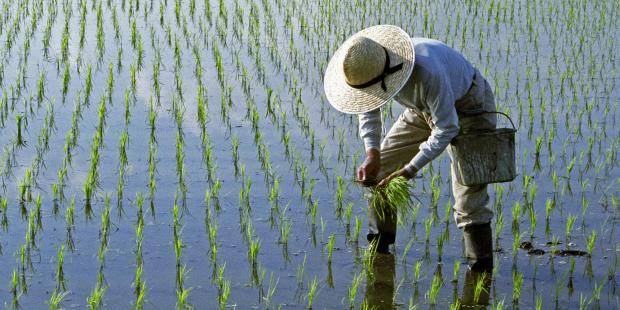Swamps, bogs, and clay-like or salty coastal waters make up roughly a third of the total arable land in China. Growing rice in these locales is nearly impossible because salt stresses plants’ water-absorption process. Specifically, saltwater makes photosynthesis and respiration more difficult for stalks and slows their growth to death.
Four types of rice registered an estimated output of between 6.5 to 9.3 tonnes per hectare, at Qingdao saline-alkali tolerant rice research and development center.
China improve its resilience to climate change, seawater rice could help bring 200,000 square kilometers of land with salty, alkaline soil into production, according to Chinese media site Xinhua. Even cultivating an additional 670 square kilometers of formerly unproductive land with seawater rice could provide an extra 30 billion kilograms of rice a year – enough to feed 80 million people.
In 2013, 13% of China’s grain was imported, according to Qian Keming, chief economist of China’s Ministry of Agriculture. This is expected to rise to 15% in 2020.
The water used to irrigate Yuan’s seawater rice trials had salt content of 0.6%. On average, the salinity of seawater is between 2-3.5% in coastal waters.
Yuan’s most recent trial batch is selling well at 54 yuan a kg (US$8) – eight times the cost of normal rice. South China Morning Post reports that there had been almost 1000 orders for seawater rice on the online retail platform Tmall.com. They hope to sell rice worth 10 million yuan (US$1.5 million) in 2017.
Salt from coastal flooding and tides has left just a fraction of China’s total land open to freshwater rice farming, and in Dongying, a region on China’s eastern coast, 40 percent of land has a salt concentration higher than 0.5 percent, according to the World Bank. Experts expect the rising waters from global climate change to exacerbate this problem.
For his research, Longping planted 200 different saltwater-tolerant rice strains at the Qindao Saline-Alkali Tolerant Rice Research and Development Center on the Yellow Sea. According to China’s Xinhua News Agency, his efforts yielded 8,030 pounds of rice per acre. For comparison, most commercial U.S. growers harvest between 7,200-7,600 pounds per acre annually.
Though promising, Longping’s experiment did not mimic the actual conditions in China, instead using water with a much lower salt concentration than could be found in nature.
Longping’s rice could also free up freshwater lands that are currently reserved for rice to grow other foods. More affluent Chinese citizens are demanding more meatand less grain-based food, but meeting that need has proven increasingly difficult given the amount of freshwater land reserved for rice cultivation.

Brian Wang is a Futurist Thought Leader and a popular Science blogger with 1 million readers per month. His blog Nextbigfuture.com is ranked #1 Science News Blog. It covers many disruptive technology and trends including Space, Robotics, Artificial Intelligence, Medicine, Anti-aging Biotechnology, and Nanotechnology.
Known for identifying cutting edge technologies, he is currently a Co-Founder of a startup and fundraiser for high potential early-stage companies. He is the Head of Research for Allocations for deep technology investments and an Angel Investor at Space Angels.
A frequent speaker at corporations, he has been a TEDx speaker, a Singularity University speaker and guest at numerous interviews for radio and podcasts. He is open to public speaking and advising engagements.

